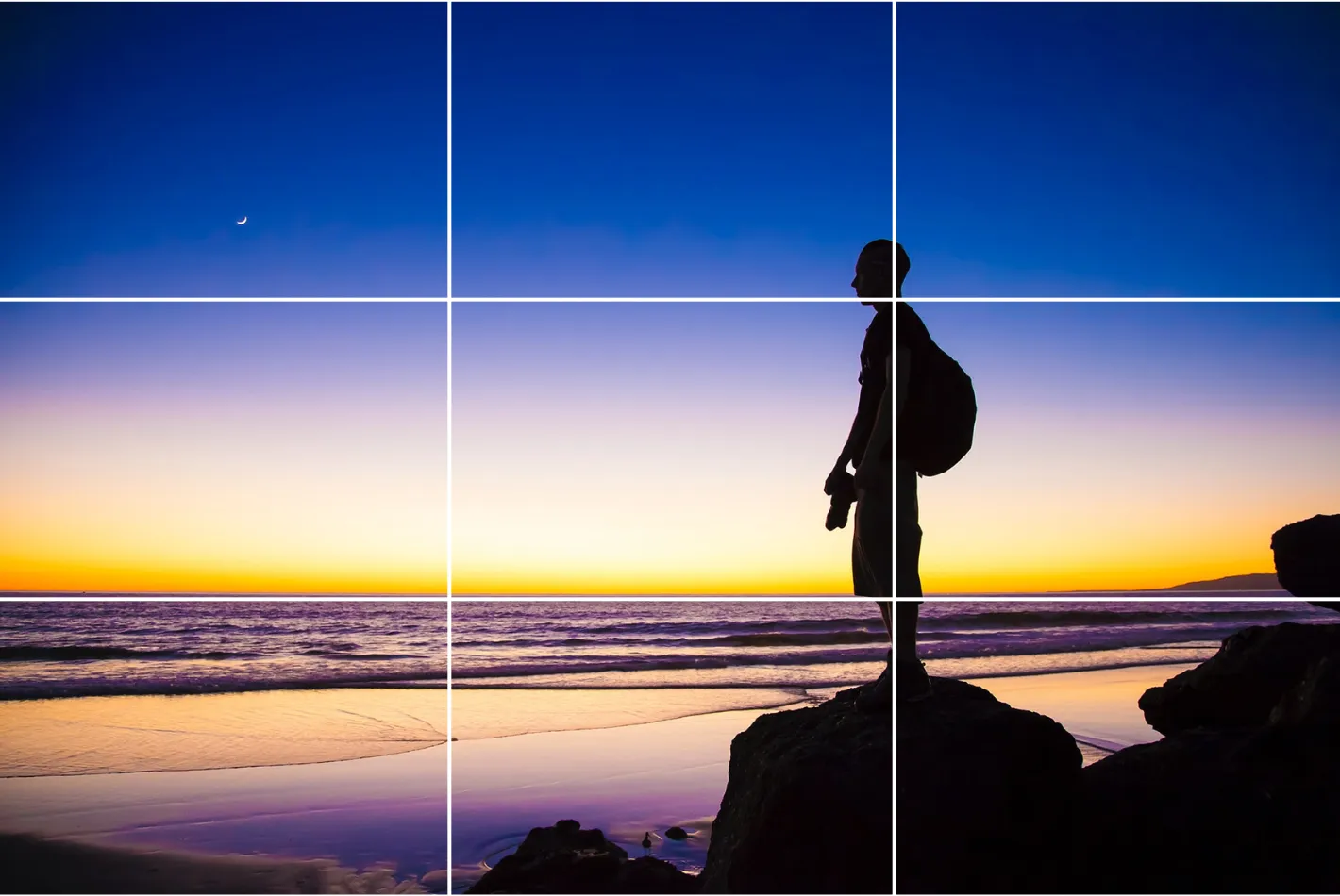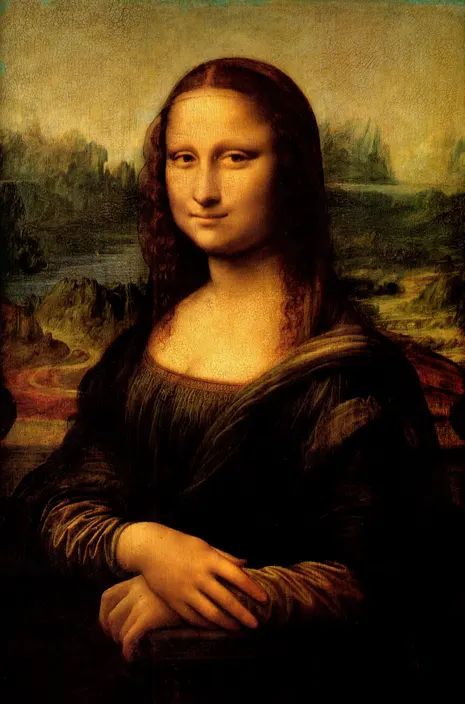In photography and art, learning the Rule of Thirds is very important. It helps make your pictures look better and more balanced. Understanding and applying this rule can transform ordinary images into captivating works of art.
In this guide, we will delve into the Rule of Thirds, exploring its history, principles, and practical applications. Whether you are new to photography or an experienced artist, learning the Rule of Thirds can help you make better pictures and art.
What is the Rule of Thirds?
The Rule of Thirds is a guide that divides a picture using two horizontal and two vertical lines, creating a grid of nine squares. The main idea of the Rule of Thirds is to place the most important parts of your picture along the lines or where the lines cross.
By doing so, you can create a sense of balance, harmony, and visual interest in your images. The idea of placing subjects off-center makes the picture more interesting and engaging.
Understanding the Grid
Visualizing the Rule of Thirds grid is crucial. Many modern cameras and smartphones offer a grid overlay feature in their viewfinders or screens. Activate this feature to help frame your shots more precisely.
Key Elements to Position
- Horizons: Placing the horizon along the top or bottom third, rather than the center, can add depth and interest to your landscape shots.
- Portraits: Positioning a subject's eyes along the upper third line can make the portrait more engaging and balanced.
- Action Shots: For dynamic scenes, place the action along one of the vertical thirds to convey movement and energy.

Example of The Rule of Thirds
History of the Rule of Thirds
The Rule of Thirds has its roots in the art world and dates back to ancient Greece. An artist and scientist named John Thomas Smith first wrote about it in his book "Remarks on Rural Scenery" in the 1700s. Smith observed that dividing a painting into thirds created a more pleasing and harmonious composition.
Over time, the Rule of Thirds has become a popular guideline in different types of visual arts. Learning the history of this rule can help you see why it is still useful for making balanced pictures.
Historical Context
- Ancient Greece: Early examples of using proportional grids in art and architecture.
- Renaissance Artists: Masters like Leonardo da Vinci applied similar principles for balanced and dynamic compositions.
Applying the Rule of Thirds in Photography
In photography, the Rule of Thirds is a powerful tool that can help photographers create visually compelling images. When taking a picture, imagine a grid of nine squares on your scene. Place important parts of your picture along the lines or where the lines cross. For instance, when taking landscape photography, you could put the horizon line to make it look deeper and balanced.
When capturing portraits, positioning the subject's eyes along the upper horizontal line to draw the viewer's attention. Experimenting with different compositions using the Rule of Thirds can lead to more dynamic and visually appealing photographs.
Practical Techniques
- Landscapes: Position the horizon on the top third for a grounded feel or the bottom third to emphasize the sky.
- Portraits: Align the subject's eyes with the top horizontal line to create a natural focal point.
- Action Shots: Place moving subjects along a vertical third line to suggest movement across the frame.

A portrait photo example using the Rule of Thirds, photographed by Toshia D.
Examples of the Rule of Thirds in Art
Many artworks in history use the Rule of Thirds to create balanced pictures, showing how well it works. One famous example is Leonardo da Vinci's "Mona Lisa," whose eyes are placed along the top line, making people look at her mysterious smile.
In Vincent van Gogh's "Starry Night," the swirling sky and moon are placed along the lines of the grid, making the picture feel lively and peaceful. By looking closely at these famous artworks and seeing how artists used the Rule of Thirds, you can better understand how this rule makes stories in pictures more powerful.
Contemporary Examples
- Photography: Check out photos by photographers like Steve McCurry and Ansel Adams. They often used the Rule of Thirds to make amazing pictures.
- Cinematic Framing: Directors such as Wes Anderson and Steven Spielberg frequently utilize this rule to craft visually captivating and harmonious scenes.

Tips for Mastering the Rule of Thirds
To master the Rule of Thirds and create balanced compositions, consider the following tips:
- Practice framing your shots using the Rule of Thirds grid on your camera's viewfinder or screen: Regular practice will help make this technique second nature.
- Experiment with different compositions by placing key elements along the gridlines and points of intersection: Don't be afraid to try new angles and perspectives.
- Use the Rule of Thirds as a guide, but don't be afraid to break the rule for creative effect: Sometimes, the most striking images come from breaking conventional rules.
- Pay attention to the balance of your compositions and adjust the placement of elements to create visual interest: Even small adjustments can make a big difference.
- Study the work of renowned photographers and artists to gain inspiration and insights into applying the Rule of Thirds effectively: Analyze their compositions and practice similar techniques in your work.
Advanced Tips
- Combine with Other Techniques: Use the Rule of Thirds alongside other compositional rules like leading lines and symmetry for more sophisticated images.
- Review and Reflect: Regularly review your photos to see how effectively you’ve applied the Rule of Thirds and identify areas for improvement.
Mastering the Rule of Thirds is a valuable skill that can elevate your compositions and enhance the impact of your visual storytelling. By understanding the principles behind this rule, practicing its application, and experimenting with different compositions, you can create images that are visually engaging, balanced, and dynamic.
Whether you're a photographer, painter, or designer, using the Rule of Thirds in your art can make your work more interesting and memorable. So, next time you pick up your camera or brush, remember the Rule of Thirds and let it guide you toward creating compositions that captivate and inspire.

A Guide to Balanced Compositions: Rule of Thirds